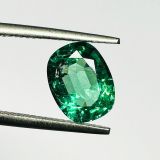Natural Diamond: Earth’s Eternal Treasure
Natural diamonds, renowned for their brilliance and timeless allure, are one of Earth’s most extraordinary creations. Formed deep within the planet over billions of years, diamonds are symbols of love, strength, and endurance. Their unmatched beauty and rarity have made them the ultimate gemstone for engagement rings, heirloom jewelry, and luxury adornments. But beyond their aesthetic value lies a fascinating journey of geological marvel and cultural significance.
Natural diamonds are not just gemstones; they are nature’s masterpiece, shaped by time and elemental forces. Their beauty, rarity, and symbolic meaning make them unparalleled treasures. Whether adorning a piece of jewelry, signifying love, or serving a practical purpose, diamonds are a timeless reminder of Earth’s extraordinary power to create perfection.
What is a Natural Diamond?
A natural diamond is a crystalline form of carbon created under immense heat and pressure in the Earth’s mantle, about 150-200 kilometers below the surface. Over millions of years, volcanic eruptions brought these gems closer to the surface, where they could be mined.
Diamonds are the hardest natural substance on Earth, scoring a 10 on the Mohs scale of hardness. This durability, coupled with their exceptional optical properties, such as brilliance and fire, makes them ideal for both industrial applications and fine jewelry.
The Formation of Diamonds
Natural diamonds are an extraordinary testament to time and nature’s power. They form under extreme conditions, requiring:
- Heat: Temperatures between 900-1,300°C.
- Pressure: 45-60 kilobars (50,000 times the atmospheric pressure at sea level).
- Time: Between 1 billion and 3.5 billion years for crystal growth.
These unique conditions result in a gemstone that is both scientifically remarkable and aesthetically breathtaking.
Mining and Sources
Natural diamonds are sourced from several regions across the globe, with notable deposits in:
- Russia: The Yakutia region is one of the largest producers of high-quality diamonds.
- Botswana: Known for ethically mined diamonds with exceptional clarity and size.
- Canada: Famous for its conflict-free diamonds and environmentally conscious mining practices.
- Australia: The Argyle Mine, known for producing rare pink and champagne diamonds.
Mining involves extracting diamonds from kimberlite pipes or alluvial deposits, often requiring significant technical expertise and environmental stewardship.
Characteristics of Natural Diamonds
Each natural diamond is unique, with characteristics that determine its value:
- Color: While most diamonds are colorless, they can occur in various hues, such as yellow, blue, pink, or green. These are known as “fancy colored diamonds.”
- Clarity: Determined by the presence or absence of inclusions and blemishes.
- Cut: The precision of a diamond’s cut affects its brilliance and fire.
- Carat: The weight of the diamond, with larger stones being rarer and more valuable.
The “Four Cs” (color, clarity, cut, and carat) are the standard for grading diamonds globally.
Symbolism and Cultural Significance
Diamonds have been revered for centuries as symbols of wealth, power, and eternal love:
- Ancient India: Diamonds were thought to bring good fortune and protection.
- European Renaissance: Worn by royalty as a sign of strength and invincibility.
- Modern Times: Diamonds became synonymous with love and commitment, largely due to the De Beers “A Diamond is Forever” campaign in the mid-20th century.
Today, diamonds remain the preferred gemstone for engagement rings, representing unbreakable bonds and enduring beauty.
Beyond Jewelry: Industrial Applications
Natural diamonds’ unmatched hardness makes them invaluable in industries:
- Cutting and Drilling: Used in tools for cutting, grinding, and drilling hard materials.
- Electronics: Leveraged for their thermal conductivity in high-tech applications.
- Optics: Utilized in lasers and specialized lenses.
These uses showcase diamonds’ versatility beyond their role as a luxury item.
Caring for Your Diamond
Diamonds are durable but still need proper care to maintain their brilliance:
- Clean with a soft brush and a solution of mild soap and water.
- Avoid exposure to harsh chemicals that can damage the setting.
- Store separately to prevent scratching other jewelry pieces.
Regular maintenance ensures a diamond retains its sparkle for generations.




